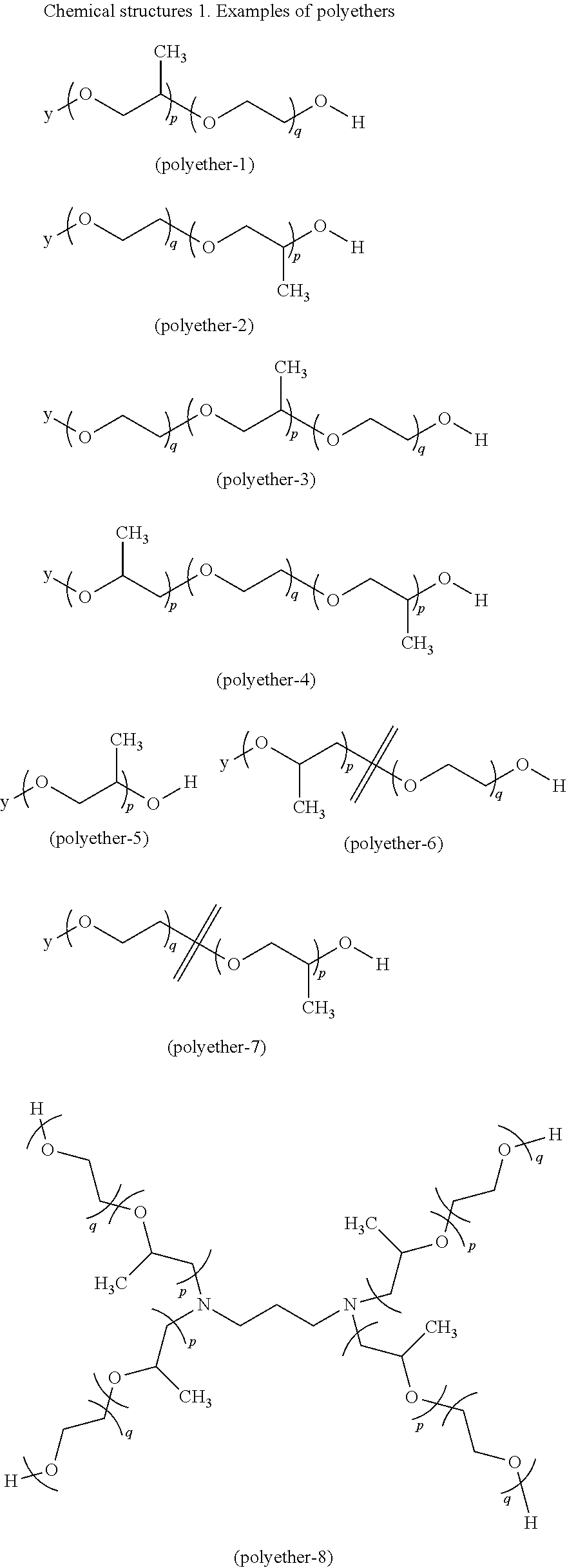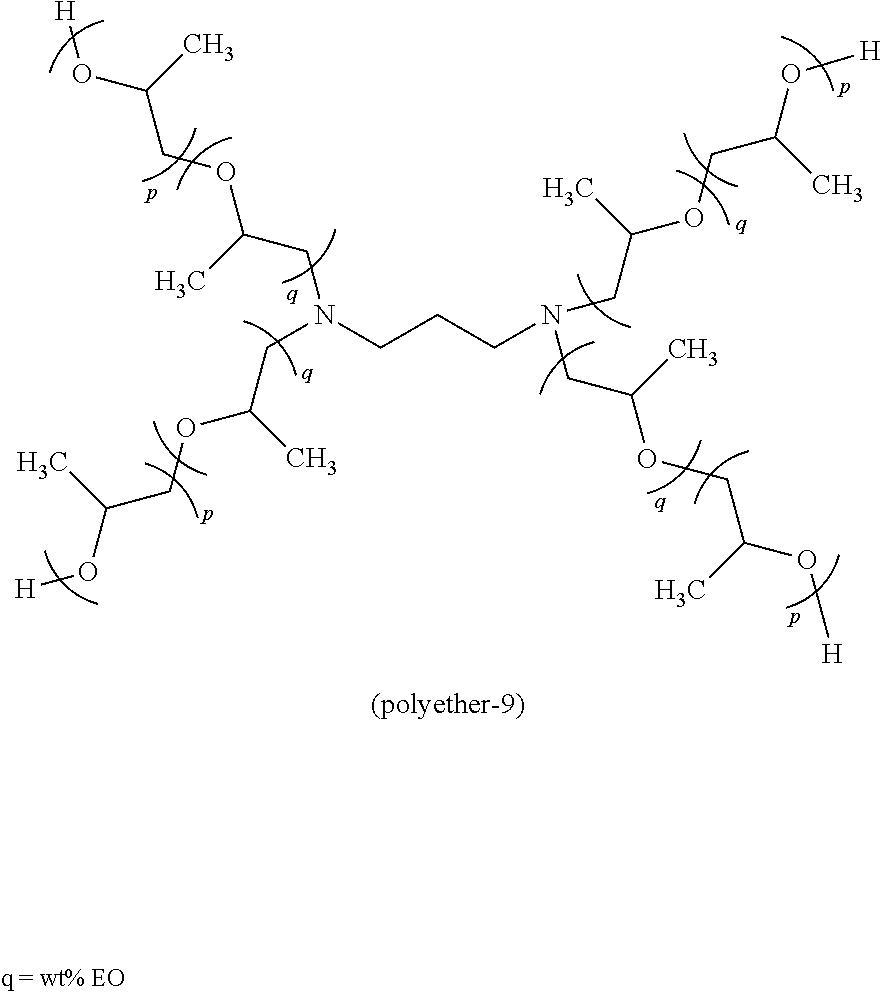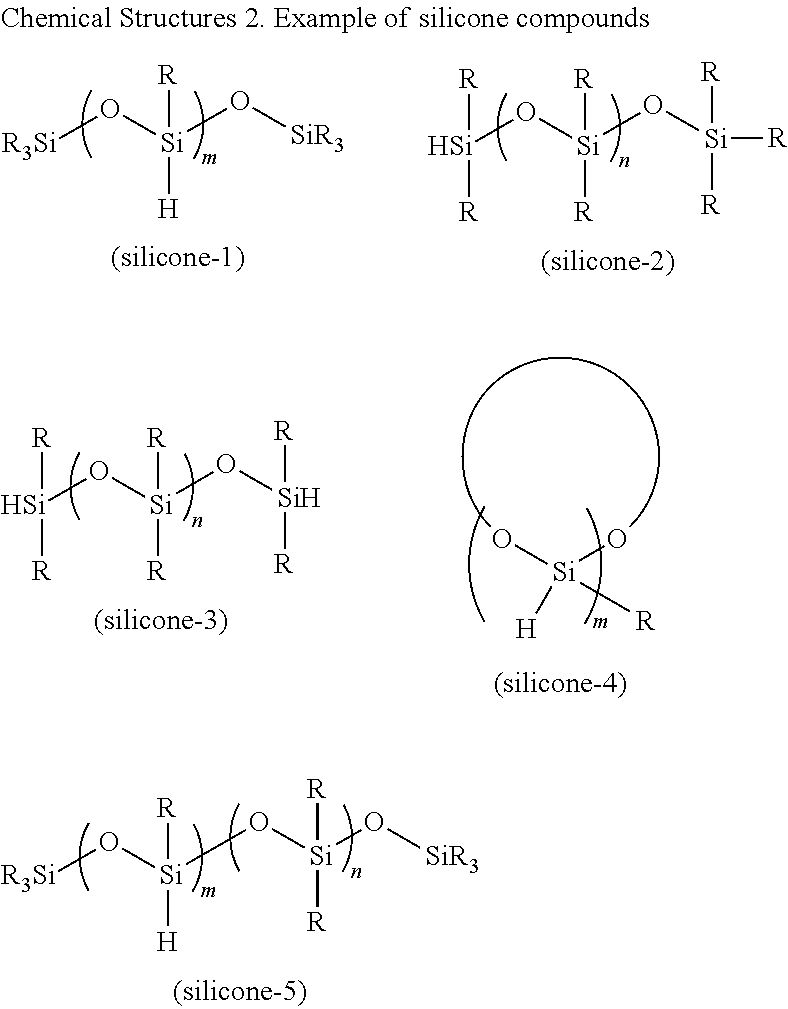Organopolysilicone polyether drainage aid
a technology of organic polyether and drainage aid, which is applied in the field of organic polyether drainage aid, can solve the problems of inefficient operation of brown stock washing system and operator's uncertainty of how to correctly respond to unfavorable situations, and achieve the effect of improving drainage respons
- Summary
- Abstract
- Description
- Claims
- Application Information
AI Technical Summary
Benefits of technology
Problems solved by technology
Method used
Image
Examples
working example-1
[0071]To a 500 mL reaction vessel equipped with an overhead stirrer, 500 g of UCON 50-HB-5100 (Dow Chemicals, Midland, Mich.) was added. The reaction vessel was gradually heated to 150° C. and stirred at 150° C. for 2 hours. Zinc(II) acetylacetonate (Strem Chemicals, Newburyport, Mass.) (0,01 wt % was added to the reaction vessel followed by gradually adding 2.0 wt % of polyhydromethylsiloxane (Grelest, Inc., Morrisville, Pa.) over 1.4 hours. The reaction was allowed to stir at 150° C. for an additional 4 hours before it was quenched by cooling the reactor to ambient temperature Scheme-1.
working example-2
[0072]To a 500 mL reaction vessel equipped with an overhead stirrer, 72.54 g of UCON 50-HB-5100 (Dow Chemicals) (polyether-6) was added. The reaction vessel was gradually heated to 160° C. using a heating mantle and stirred at 160° C. for 2 hours. Zinc(II) acetylacetonate (Strem Chemicals)(0.04 wt %) was added to the reactor in powder form. Hydride terminated polydimethylsiloxane (Gelest) 52 wt % was then added to the reaction in three separate doses of 26.6 g over a period of 1 hour. After the addition of silicone was complete, the reaction was allowed to stir at 160° C. for an additional 5 hours. The reaction was quenched by cooling the reactor to ambient temperature (Scheme-2).
working example-3
[0073]To a 500 mL reaction vessel equipped with an overhead stirrer, 300 g of UCON 50-HB-5100 (Dow Chemicals) was added. The reaction vessel was gradually heated to 160° C. using a heating mantle and stirred at 160° C. for 2 hours. 0.03 wt % of Zinc(ll) acetylacetonate (Strem Chemicals) was added to the reactor in powder form. 15 wt % of tetramethylhydrocyclosiloxane (Gelest)) was injected into the reaction over a period of 1 hour. After the injection of tetramethylhydrocyclosiloxane was complete, the reaction was allowed to stir at 160° C. for up to 5 hours. The reaction was quenched by cooling the reactor to ambient temperature (Scheme-3).
PUM
| Property | Measurement | Unit |
|---|---|---|
| wt % | aaaaa | aaaaa |
| temperature | aaaaa | aaaaa |
| temperature | aaaaa | aaaaa |
Abstract
Description
Claims
Application Information
 Login to View More
Login to View More - R&D
- Intellectual Property
- Life Sciences
- Materials
- Tech Scout
- Unparalleled Data Quality
- Higher Quality Content
- 60% Fewer Hallucinations
Browse by: Latest US Patents, China's latest patents, Technical Efficacy Thesaurus, Application Domain, Technology Topic, Popular Technical Reports.
© 2025 PatSnap. All rights reserved.Legal|Privacy policy|Modern Slavery Act Transparency Statement|Sitemap|About US| Contact US: help@patsnap.com



